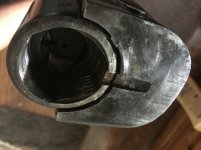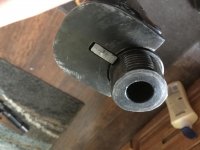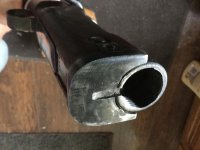My bet is this was one of the "exotic" K98ks on Gunbonker maybe 10 years back that we were clowning here. It's been bobbing around like a turd in the surf looking for a beach to wash up on. Perhaps it washed up on a couple beaches since then and was tossed back into the water. There was this one (or its twin made by the same humper), a side folding stock, and a "bakelite stock". All of these were listed for high dollar (five figures) on Gunbonker and were laughable to someone with knowledge, but would probably fascinate the standard funshow table fly whose research and learning did not extend past a copy of BOTW. The trick is finding someone ignorant but also with deep pockets. Those people didn't earn that money, they inherited it or came into it as a matter of luck (e.g., lottery or Saudi prince). It's hard to find that person at a funshow between the distractions of getting your glasses cleaned, knife sharpened, sampling deer jerky, and shopping Hellfire cranks for 10/22s. So it winds up on Gunbonker with carnival barking. The problem there is it gets on our radar screen and becomes the source of amusing ridicule such that it is forever tainted.
As set forth, I see nothing about this thing beyond the skill of a decent (not great) machinist and gunsmith. A truly excellent machinist and gunsmith could really turn out something interesting, which is not the case here. Again, I would fire this, but tied to a tire with a lanyard from behind a tree about 20 feet away.











